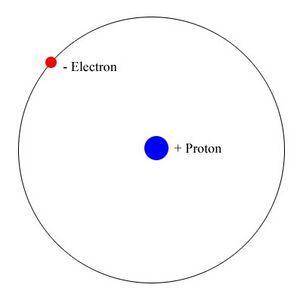Homeworks 1
| ||||||||
Homeworks 1 is the attempted solution to our second task[1] in the course Introduction to Astrophysics. This assignment is due on Wednesday 09/09/09 and was assigned on 09/01/09. Solutions were created by Group 1 (RyanT, KimW, SaraC, ZackM, TiaraD)
Problem 1
List in order of increasing size and give the approximate size of the following objects: An atom, a biological cell, a cluster of galaxies, the Earth, a galaxy, the Local Group of galaxies, a neutron, a neutron star, a person, the Solar System, our sun. Note: you may have to look in other books besides your textbook to get all this information.
There are 3 ways to approach this problem: By radius, by volume, and by mass
By Radius
- Neutron = (or = ) [2] [3] [4]
- Atom = empirical atomic radius = [5] [6]
- Biological Cell = [7] [8]
- Person = 4'11" = [9]
- Neutron Star = = [10] [11]
- Earth = radius of the Earth = = Cite error: Closing
</ref>missing for<ref>tag - Solar System = radius of the comet Oort Cloud's orbit = = [12]
- Galaxy = radius of most galaxies = = [13]
- Local Group of Galaxies = radius of Local Group = = [14]
- Cluster of Galaxies = approximate size of most clusters = = [15]
Problem 2
The nearest star outside the solar system is about 4 light years away.
- How far away is the star in kilometers?
- Suppose you travel to the nearest star in a rocket ship moving at 100 km per hour (100 km/hr is
about 62 mi/hr, a typical automobile speed on a Florida highway). How many years will it take you to get to the star?
- Suppose you travel to the star at 10 km per second (the speed of a rocket in orbit around the Earth). How many years will it take you to get to the star?
Problem 3
Use the size of the Astronomical Unit in kilometers and the length of the year in seconds to calculate how fast the Earth moves in its orbit in kilometers/second.
Problem 4
Describe the essential differences between the Ptolemaic, Copernican, and Keplerian descriptions of planetary motion.
Problem 5
Use Newton’s laws to show that the orbits of planets are ellipses.
Notes
- ↑ Our first task was to register our PRS, visit the course web-page on Blackboard, look at the textbook, and write an equation for our wiki
- ↑ Which is larger, the proton or the neutron? http://www.physlink.com/education/AskExperts/ae570.cfm
- ↑ What are the sizes of protons neutrons and electrons? http://wiki.answers.com/Q/What_are_the_sizes_of_protons_neutrons_and_electrons
- ↑ On the Radius of the Neutron, Proton, Electron and the Atomic Nucleus http://www.wbabin.net/physics/yue.pdf
- ↑ Information about Atomic Radii: http://www.webelements.com/
- ↑ J.C. Slater, J. Chem. Phys. 1964, 41, 3199.
- ↑ The Biological Cell on Wikipedia http://en.wikipedia.org/wiki/Cell_(biology)
- ↑ Campbell, Neil A.; Brad Williamson; Robin J. Heyden (2006). Biology: Exploring Life. Boston, Massachusetts: Pearson Prentice Hall. ISBN 0-13-250882-6
- ↑ Kim Wynne's height
- ↑ http://en.wikipedia.org/wiki/Neutron_star
- ↑ Paweł Haensel, A Y Potekhin, D G Yakovlev (2007). Neutron Stars. Springer. ISBN 0387335439.
- ↑ http://curious.astro.cornell.edu/question.php?number=374
- ↑ http://imagine.gsfc.nasa.gov/docs/ask_astro/answers/001205a.html
- ↑ http://www.universetoday.com/guide-to-space/galaxies/local-group/
- ↑ http://www.damtp.cam.ac.uk/user/gr/public/gal_lss.html
References
- B.W. Carroll & D. A. Ostlie (2007). An Introduction to Modern Astrophysics. Addison Wesley. ISBN 0-8053-0402-9
- Lectures 1-4
- Chapters 1-2



















